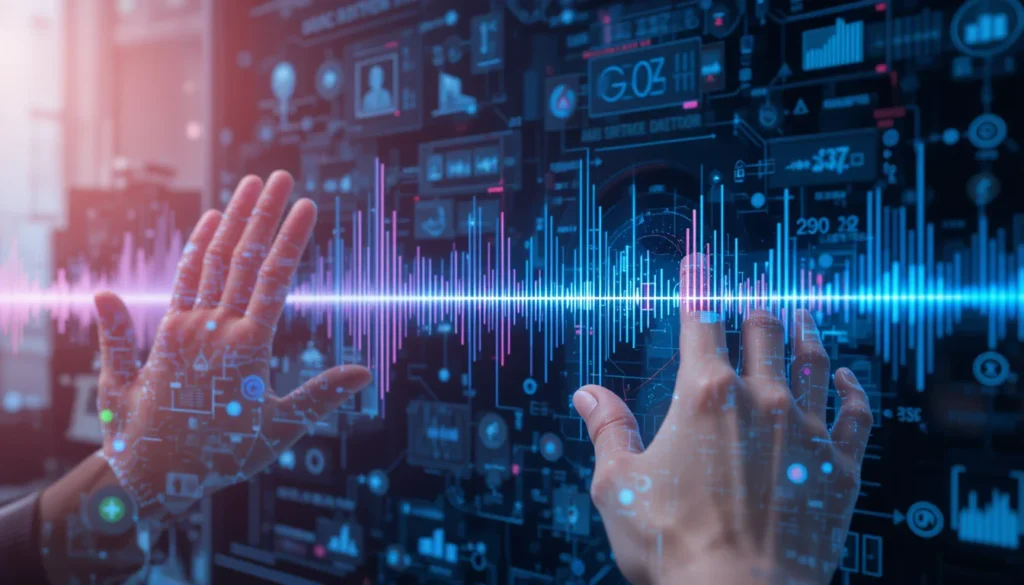Overview
Deepfake Audio Detectors, once seen as the frontline defense against synthetic voice manipulation, are being easily bypassed by new replay attack techniques. In a recent study, researchers revealed that 87% of tested audio detection tools failed when replay attacks were used with minor modifications. This raises urgent concerns in both corporate security and law enforcement where deepfake detection is mission-critical.
Key Facts
- 87% of audio detectors failed to identify replayed deepfake voices.
- Attackers used low-tech, inexpensive tools to manipulate audio playback.
- Some detectors were bypassed by slight pitch shifts or background noise.
- The study covered open-source, academic, and commercial tools.
- Attacks were successful in real-time communication channels like Zoom, WhatsApp, and Google Meet.
- Security systems in banks, enterprise authentication systems, and government helplines were reportedly vulnerable.
What’s Verified and What’s Still Unclear
✅ Verified:
- Multiple detector tools can be tricked using simple replay methods.
- Audio played through external speakers or altered slightly passes as authentic input.
- These attacks work even on platforms with real-time voice verification systems.
❓ Still Unclear:
- How many real-world systems have already been exploited using this method.
- The exact list of vulnerable detection tools remains undisclosed.
- Whether biometric authentication vendors will patch the identified weaknesses quickly.
Timeline of Events
- March 2025: Research into deepfake detection flaws initiated by a team at the Technical University of Munich and MIT.
- April 2025: Testing conducted on 25 major detection systems across academia and commercial platforms.
- May 2025: Findings peer-reviewed and submitted to DEF CON and Black Hat cybersecurity conferences.
- June 17, 2025: Summary of research published, alarming cybersecurity experts across industries.
- June 18, 2025: Enterprises begin emergency reviews of voice authentication systems.
Who’s Behind It?
This specific test wasn’t an attack but a white-hat research initiative led by:
- Dr. Laura Meinhardt, Technical University of Munich.
- Dr. Aamir Khan, MIT Media Lab.
- The testing was conducted ethically and transparently with the cooperation of some vendors.
However, real-world attackers—especially cybercriminals and state-sponsored groups—are known to actively develop deepfake toolkits that can replicate voices of executives, law enforcement, and even relatives in vishing (voice phishing) scams.
Public & Industry Response
The cybersecurity industry has reacted with concern. Leading firms like Symantec and CrowdStrike are reviewing their audio verification processes.
Meanwhile, public concern is growing as cases of voice spoofing scams using replay attacks have already been reported in:
- India – where a CEO transferred ₹60 lakh after hearing a fake voice of a board member.
- UK – where an elderly citizen was manipulated by a synthetic voice impersonating his son.
What Makes This Attack Unique?
🎯 Minimal Tech Required
Unlike traditional deepfake attacks that require high-end GPUs and AI models, these replay attacks can be done using a smartphone and a Bluetooth speaker.
🎭 Authenticity Illusion
Detectors failed not because the voice was synthetically created—but because the replayed synthetic voice mimicked a real environment, bypassing filters designed for static deepfakes.
🕵️ Harder to Detect in Real-Time
Live voice verification tools, especially in banking and government services, are more vulnerable due to noisy environments and speed-focused authentication.
Understanding the Basics
🔍 What is a Replay Attack?
A replay attack involves recording someone’s voice or a synthetic version of it and playing it back to an authentication system to fool it into thinking it’s the real person.
🧠 How Do Deepfake Audio Detectors Work?
They analyze vocal features, frequency anomalies, and metadata to differentiate between real and synthetic voices.
But when the audio is pre-recorded and replayed cleverly, many detectors can’t distinguish the difference—especially in real-world, noisy, or compressed audio environments.
What Happens Next?
Governments, banks, and tech platforms are expected to:
- Review their voice authentication systems.
- Incorporate multi-factor authentication rather than voice-only systems.
- Invest in liveness detection technology that can analyze lip sync or physical presence.
- Launch awareness campaigns to educate the public on recognizing potential voice fraud attempts.
Researchers also plan to open-source part of the detection bypass test suite to help vendors test their own systems more effectively.
Summary
The failure of deepfake audio detectors under advanced replay attacks represents a significant new threat vector in cybersecurity. As synthetic voices become more realistic and easily accessible, detection systems must evolve beyond static pattern recognition and adopt multi-layered, context-aware approaches.
With 87% of tools bypassed, this revelation urges rapid innovation in voice-based security. Organizations relying on voice verification must act now—or risk becoming the next victim of this fast-growing AI-powered deception.
